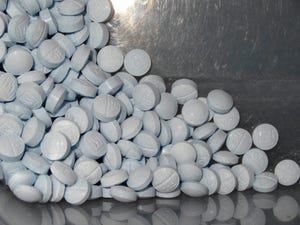Bethlehem Baptist Church, the church that grew to prominence under Pastor John Piper, is convulsing. Jean Hopfensperger has the story and I have a few thoughts.
What’s been happening?
Three pastors have abruptly resigned this summer from Bethlehem Baptist Church of Minneapolis, signaling “a painful and confusing moment” at a megachurch that gained national prominence under longtime pastor John Piper.
The pastors cited several reasons for resigning, including how the church’s leadership council has handled race and diversity issues, and what one labeled a “bullying” and “toxic” culture toward those who hold different opinions.
At least one of the pastors said he was disturbed over the council’s refusal to distance the church from remarks about abused women by the incoming president of the church’s college and seminary.
…
“I believe our leadership culture has taken a turn in an unhealthy direction as we try to navigate conflict and division,” Meyer wrote in his July resignation letter. “Institutional protection can go too far when other viewpoints are unwelcome.”
Former care and counseling pastor Bryan Pickering, who also resigned, went further and claimed there was “domineering leadership, spiritual abuse and a toxic culture.”
…
interviews and correspondence with the departing pastors and congregation members point to several underlying issues.
One stems from church officials’ response to a “racial harmony” task force in 2019, which analyzed the diversity of the church’s leadership or lack thereof, and made numerous recommendations to recruit and retain members to the council, made up overwhelmingly of white men.
Task force members wanted the 85-page report to be sent to the congregation, but it wasn’t. Some elders charged the report was influenced by Marxism and critical race theory, task force members said. The elders now say the report will be released.
“We believe that in the absence of biblical clarity, ethnic harmony becomes a ‘wax nose’ that we can shape and twist any way we like,” according to a Council of Elders statement. “We simply cannot allow politics or secular culture to define our terms or determine our beliefs.”
Hold up. There is an absence of Biblical clarity on the topic of “ethnic harmony”? I would have thought that Revelation 7 succinctly summarized God’s perspective: “there was a great multitude that no one could count, from every nation, from all tribes and peoples and languages, standing before the throne and before the Lamb.”
Likewise, talking about “the sins of racism” or spousal abuse from the pulpit was not welcomed, Pickering said.
I can understand that. When people are hurting and the culture outside of the church is talking about the ways in which people have been hurt, abandoned, and attacked, we absolutely would not want to give anyone the impression that the Bible might have anything relevant to say on the matter. Taking a stand could offend someone. And that someone might be wealthy and influential. Better to keep quiet and preserve our relationships with the powerful.
Another flash point occurred after church members became aware of Bethlehem College and Seminary President Joe Rigney’s appearance on an episode of “Man Rampant,” an Amazon Prime video series hosted by controversial religious figure Doug Wilson. In a discussion about what to do when a woman reports physical abuse to a pastor, Wilson and Rigney stressed it was important not to immediately believe her until they’ve heard the abuser’s side of the story.
Yes! The woman was probably mouthing off to her husband, neglecting her most important responsibilities (such as catering to her husband’s every whim), or voting for the wrong people. Regardless, she likely had it coming and once you’ve heard his side of the story you’ll understand exactly why he was justified in hitting her.
Upset church members introduced a motion at a Council of Elders meeting this year, asking that the full council “make a written, public statement separating the views expressed by Joe Rigney in Man Rampant from the views and teachings of Bethlehem Baptist Church.”
A council member who had given the episode a five-star online review threatened to resign if the motion passed. It was tabled.
Of course it was. Whatever else American evangelical Christians are, they’re moral cowards. It’s more important to coddle the powerful and defer to their feelings than it is to take a stand for truth and righteousness.
Church leaders declined to sanction a seminary professor who had been accused by a dozen students of abusive behavior. An investigation later determined there were no legal violations.
Oh. No legal violations. Professors can act like any kind of asshole that they like as long they don’t actually break the law. A seminary professor certainly has no higher moral or ethical standard that they should live by. All of those fruits of the Spirit—love, joy, peace, patience, kindness, generosity, faithfulness, gentleness, and self-control—are for other people.
Stokes attributes some of the tensions and resignations at Bethlehem to the impact of the nation’s climate of polarization.
“You talk about racial issues too much, and some people will say ‘I’m leaving the church,’ “ he said. “You don’t talk enough about racial issues, and people say ‘I’m leaving.’ “
So he admits it: people will leave regardless. The only thing you get to choose is why people will leave and what you’ll stand for. Stokes is on the side of standing quietly by while evil is done, being complicit in that evil, and retaining the good opinion of both the evildoers and those who don’t want to hear about the existence of evil.
I believe Jesus had something to say about this as well.
“Salt is good; but if salt has lost its taste, how can its saltiness be restored? It is fit neither for the soil nor for the manure pile; they throw it away. Let anyone with ears to hear listen!”
